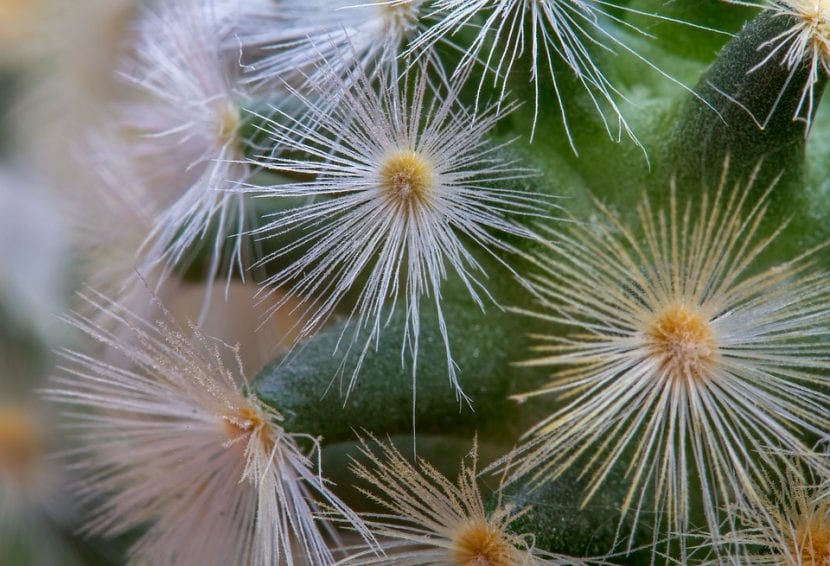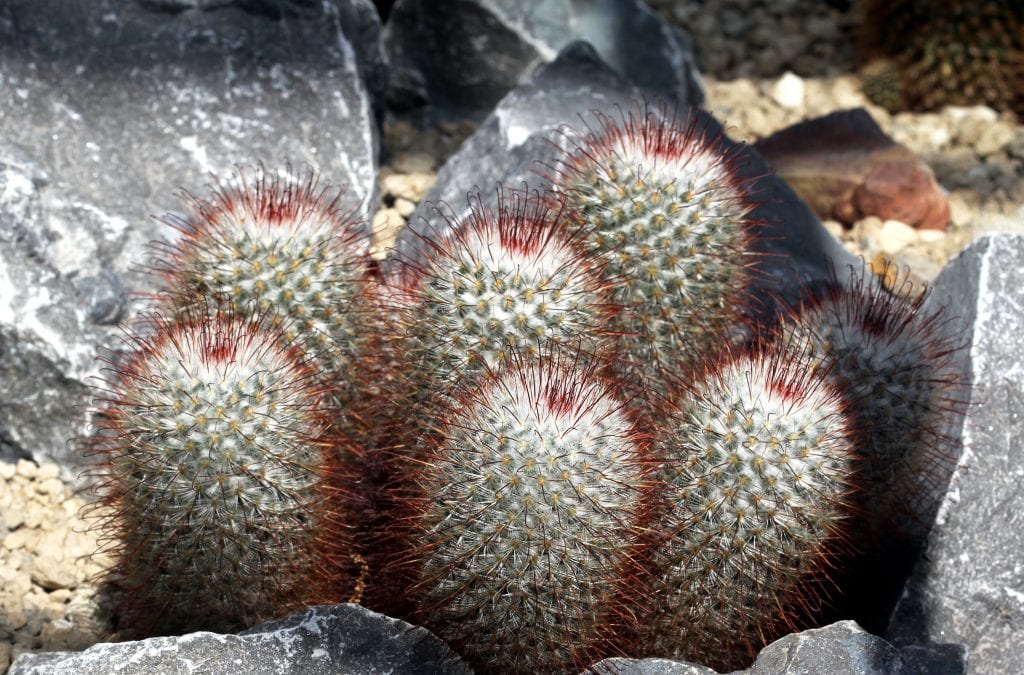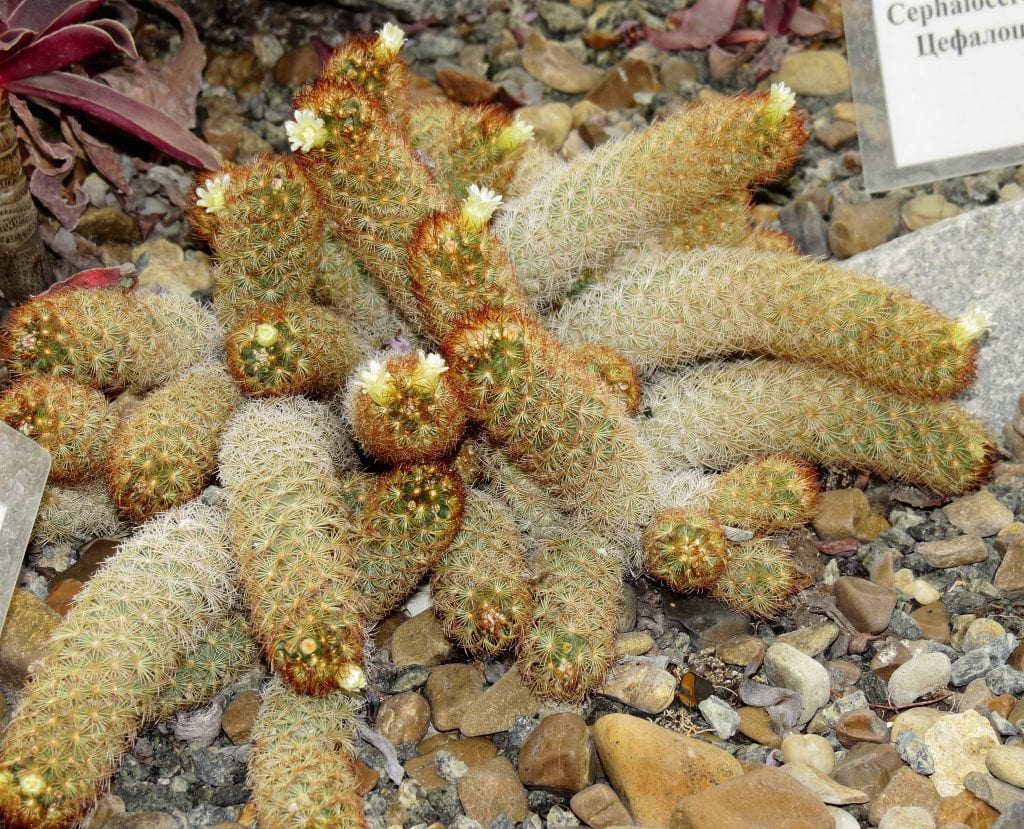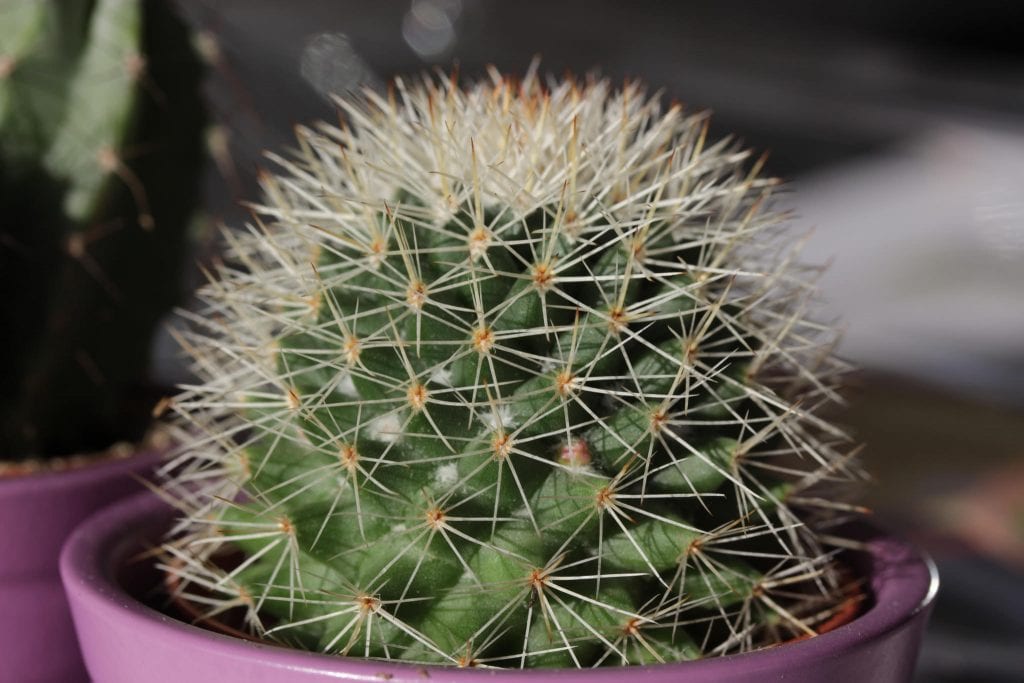
Mammillaria tayloriorum
Talk about Mammillaria is to speak of one of the most diverse genera of cacti, with neither more nor less than some 350 accepted species and varieties. The most interesting thing is that, not only do they produce very showy flowers, but practically all of them are suitable for growing in pots.
And I can't tell you if the latter is a luck or a misfortune, because, really, there are each one that is very, very beautiful. Know them.
Origin and characteristics

Mammillaria are tubercular cacti native to Mexico, the southern United States, the Antilles, and the coasts of Venezuela. The genus was described by Carlos Linnaeus in his book Cactus mammillaris in 1753, and They are characterized by having a globose or cylindrical shape with a size ranging from 1 to 40cm in height by 1 to 20cm in diameter.
They do not have ribs like other cacti, but rather have conical, cylindrical, pyramidal or round tubercles that are called mamilas. The spines, long or short, straight or hooked, sprout from the areoles, which may be covered by wool or bristle.
The flowers usually sprout along the body of the cactus, almost as if they wanted to form a crown, and they are small, with colors ranging from white to pink to red. And the fruit is a globular or elongated bright red, green or white berry, containing 1-3mm brown or black seeds.
Main species
Writing about the more than 300 species that there are would give us a book 🙂, so I'm going to tell you which are the most popular:
Mammillaria bombycina

It is endemic to Aguascalientes and Jalisco in Mexico. Its body is globose, with a height of 20cm and a diameter of 6cm. From the areolas sprout 30 to 40 radial, rigid and thin spines, and a central reddish spine with a hook shape. The flowers are pink, about 2cm in diameter. It usually forms groups.
Mammillaria gracilis

It is now called Mammillaria vetula. It is endemic to the states of Guanajuato, Hidalgo and Querétaro in Mexico. Its stems are spherical or cylindrical, green in color and with a height of about 10cm by 2cm in diameter.. The areolas are covered in a little wool, or they may have none at all. From them usually sprout 1-2 sharp spines up to 10mm long, and 11-25 radial spines, fine and 3-10mm long. The flowers are lemon-colored and measure 1,7cm. It grows in groups.
Mammillaria hahniana

It is endemic to the state of Guanajuato, Querétaro and Tamaulipas in Mexico. It has a globose-shaped body and usually forms groups. Each individual stem reaches 9cm tall by 10cm in diameter. From each areola sprout 20 to 30 radial spines 1,5 cm long that look like white hairs, and 1 to 4 shorter and whitish spines. The flowers are up to 2cm in diameter, and are purple.
Mammillaria elongata

It is endemic to the state of Hidalgo, Guanajuato and Querétaro in Mexico. It grows developing more or less erect or semi-prostrate cylindrical stems 6-15cm long by 1,5-3,7cm in diameter.. They have a green body, but the spines are yellow-orange or yellow-reddish. Its flowers are tiny, barely 1cm, yellow or white. Form groups.
What are their cares?
If you want to have a copy, we recommend you take care of it as follows:
Location
They are plants that must be outside, in direct sun. But beware, if it has never been like this before, get used to it little by little and gradually to prevent it from burning.
Earth
- Flower pot: not too demanding; Now, if you have volcanic sand (pomx, akadama or similar) it will cost less to root than if it had peat. But if you can't get it, mix universal growing medium with perlite in equal parts.
- Garden: grows in sandy soils, with good drainage. As the plant is rather small, if the soil you have is not like that, make a hole of about 40 x 40cm, cover its sides and the base with shading mesh and then fill it with the substrate mentioned above.
Irrigation

Mammillaria swinglei
Moderate to low. During the summer you have to water it an average of 2 times a week, and the rest of the year an average of 1 time every 10 days. But you should see this as a guideline, never as a fixed rule, because if, for example, you live in an area where it does not rain much and it is also very hot, you may have to water up to 3 times in summer and up to 2 the rest .
So that there are no problems, check the humidity of the soil before watering. This can be done by inserting a thin wooden stick (if when you extract it it comes out with a lot of adhering soil, do not water), or weighing the pot once watered and again after a few days (this difference in weight will help you know when to water ).
And by the way, never plant it in containers without holes or put a plate under it, as doing so will rot. Nor should you water it overhead, for the same reason and also because it could burn with the sun.
Subscriber
In spring and summer with a specific fertilizer for cactus, following the indications specified on the package. You can also with chemical fertilizers, like blue nitrophoska, adding one or two small tablespoons every 15 days.
Multiplication
The Mammillaria multiply by seeds and, some species, by separation of stems in spring-summer. Let us know how to proceed in each case:
Seeds
The step by step to follow is as follows:
- First, fill a tray with holes - small - with black peat mixed with perlite, and moisten it with a sprayer / atomizer.
- Then, sow the seeds on the surface, making sure they are slightly separated.
- Then cover them with very fine-grained volcanic sand.
- OPTIONAL (although recommended): now sprinkle powdered sulfur, as if you were adding salt to a salad, thus avoiding the appearance of fungi.
- Finally, place the tray near a heat source and in a bright area but protected from direct sun.
Keeping the substrate always moist - not waterlogged - they will germinate in about two weeks.
Cuttings
To multiply the Mammillaria by separating the stems, you simply have to cut one with a serrated knife previously disinfected with pharmacy alcohol, let the wound dry in semi-shade for a week and then plant it in a pot with volcanic sand that we will moisten with a sprayer.
Protecting it from direct sunlight, it will emit its own roots after 2 or 3 weeks.
Plagues and diseases
It can be affected by:
- Mealybugs: mostly cottony, but they can be limpet type. They are fought with diatomaceous earth (the dose is 35g per 5l of water), or with specific insecticides.
- Mollusks (snails and slugs): these little animals don't care about thorns. In the rainy season they appear to feed on everything they can, including cacti. They are fought with molluscicides, beer or by taking them and taking them as far as possible from the plants.
Another option is to protect these crops with mosquito netting (both from the sides and above, as if it were a kind of greenhouse). - Mushrooms: When overwatered the roots rot and the stems become soft. You have to control the risks and treat with fungicide.
Planting or transplanting time
In spring. In case of having it in a pot, transplant every two or three years.
Rusticity
It depends a lot on the species, but from experience I will tell you that weak frosts (down to -2ºC) do not harm them as long as they are short and punctual.

Mammillaria backebergiana
What did you think of the Mammillaria?
Hello, I'm happy, I love cacti and I have some of this species and I didn't know how to take care of them ... Now with your help they will become more beautiful —–
THANK YOU
We are glad to know that the blog is useful to you, Alicia 🙂
Your blog is very good. I have a Mammillaria that has given children that have grown in her body. Three have come out and I have taken one out to see if it manages to root. I would like to be able to send you a photo but I don't know how to do it. I do not know the species of this Mammillaria that I have. I could not find it. It is similar to M.backebergiana but only has 6 to 8 spines per mammilla.
Hi Margie or Hello Margarite.
You can send us a photo through our profile Facebook : )
Regards!
Hi, I love it! I have several of these beauties, but there is one that I cannot identify ... It looks a lot like the mammillaria bombycina but the red spines do not end in a hook, they are straight. Thanks ?
Hi Josefina.
If you want you can send us an image to our Facebook, so we can help you better.
Regards!
Ayudaaaa I think it was a lot of water and it starts to rot. What do I do?? 🙁
Hi Garcia.
You have to remove it from the pot and let the soil dry, in a sheltered place.
After a day or two, plant it back in a clean pot with new soil, and water only when you see that the soil is damp.
Here You have more information.
Greetings.